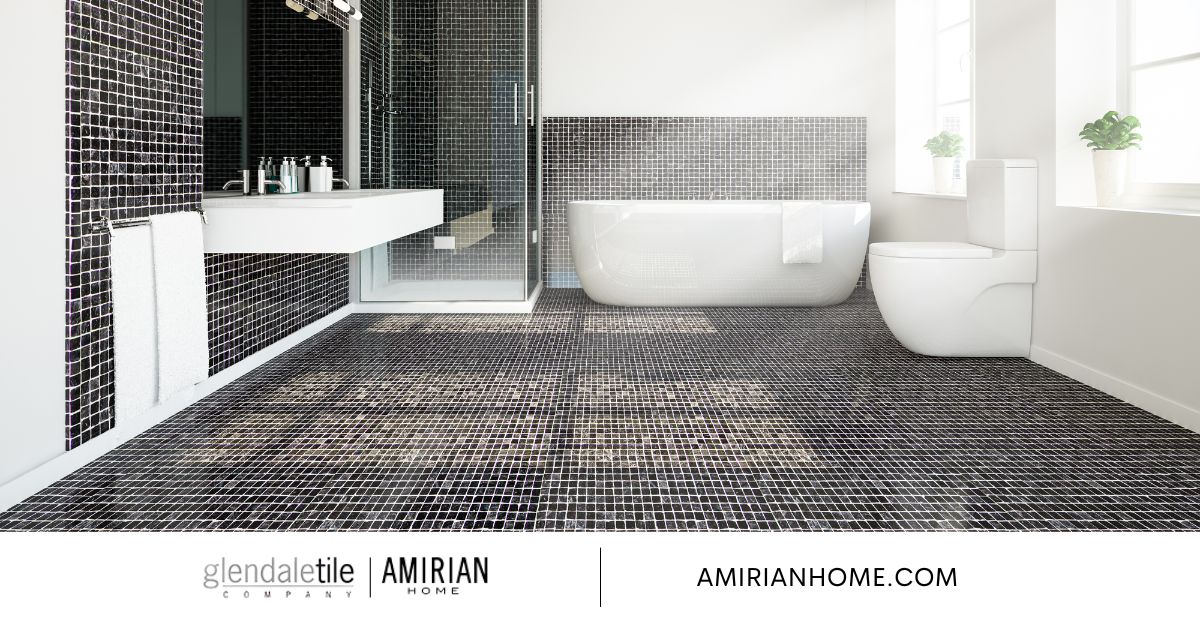The choice of flooring can significantly impact the look, feel, and functionality of your home. Each room has its unique requirements, and selecting the right tiles is crucial for both aesthetic and practical reasons. In this comprehensive guide, we’ll delve into best practices for choosing floor tiles for your kitchen, bathroom, and living spaces, drawing insights from the experts at Glendale Tile Company.
Kitchen Floors: Durability Meets Style
The kitchen is one of the busiest areas in your home, and its flooring should be able to withstand heavy foot traffic, spills, and frequent cleaning. Porcelain and ceramic tiles are popular choices for kitchen floors due to their exceptional durability. They are resistant to stains, moisture, and scratches, making them ideal for this high-traffic area.
When selecting kitchen tiles, consider larger formats for a more open and seamless look. Neutral tones or natural stone-look tiles can add elegance to your kitchen. Ensure the tiles have a slip-resistant surface to prevent accidents in a space where spills are common.
Bathroom Floors: Balance Beauty and Functionality
Bathroom floors need to strike a balance between aesthetics and practicality. Given the moisture-prone environment, it’s crucial to choose floor tiles that can handle water without becoming slippery. Porcelain tiles with a matte or textured finish are excellent choices for bathroom floors as they provide both style and slip resistance.
Mosaics are another popular option for bathroom floors, especially in shower areas. They offer visual interest and can be used to create intricate patterns or accent zones. Choose a grout color that complements your tile selection to enhance the overall design.
Living Spaces: Elevate Comfort and Style
Living rooms, bedrooms, and other common areas offer more design flexibility. Here, you can prioritize aesthetics and comfort while still considering durability. Wood-look porcelain tiles are an excellent choice for a warm, inviting ambiance. They mimic the look of hardwood while being more resilient to wear and tear.
Large-format tiles can make a small room appear more spacious, while patterned tiles can add character to larger living spaces. Remember to coordinate the color and texture of your tiles with the overall design theme of the room, including furniture and decor.
Consistency or Transition: Connecting Spaces
When you have an open floor plan where the kitchen, living, and dining areas flow seamlessly into one another, it’s essential to decide whether to maintain consistent flooring or create a transition.
Consistent tiles create a sense of continuity and make the space appear more expansive. However, they should complement the specific requirements of each area (e.g., choosing slip-resistant tiles for the kitchen).
If you opt for a transition, ensure it’s visually appealing and thoughtfully integrated into the design. A subtle change in tile color or pattern can mark the transition while maintaining a harmonious flow.
Tile Size Matters: Visual Impact and Practicality
The size of your floor tiles can have a significant impact on the visual perception of a room. In smaller spaces, large-format tiles can create an illusion of more significant square footage. In contrast, smaller tiles can add intricate detail and texture to larger areas.
Consider the room’s proportions and your design goals when selecting tile sizes. In contemporary settings, large tiles with minimal grout lines can offer a sleek and modern look. Smaller tiles, such as mosaics, can add complexity and visual interest, particularly in traditional or rustic designs.
Grout Selection: Aesthetic and Maintenance Considerations
Grout is not just a functional element but also a design choice. The color and width of grout lines can significantly impact the overall appearance of your tiles. Dark grout can create contrast and highlight the individual tiles, while lighter grout can create a seamless, cohesive look.
In high-traffic areas like the kitchen, consider epoxy grout, which is highly resistant to stains and moisture. Regular maintenance of grout lines is essential to preserve the beauty of your tiles. Ensure they are sealed properly to prevent water penetration and staining.
Underfloor Heating: Comfort and Luxury
If you’re looking to add an extra layer of luxury and comfort to your home, consider underfloor heating systems. These systems can be installed beneath your floor and provide radiant heat, making your floors warm to the touch. They are particularly beneficial in bathrooms, where stepping onto a warm floor during colder months can be a delight.
Underfloor heating not only enhances comfort but also improves energy efficiency by evenly distributing heat throughout the room.
Professional Installation: The Key to Longevity
Regardless of the room or type of tiles you choose, professional installation is essential for ensuring the longevity and performance of your flooring. Experienced tile installers understand the intricacies of laying tiles, including proper subfloor preparation, adhesive selection, and grout application.
At Glendale Tile Company, we not only offer a wide selection of exquisite tiles but also provide expert installation services to ensure your tiles look and perform their best for years to come.

Elevate Your Home with Thoughtful Floor Tiles Selection
The choice of floor tiles in your kitchen, bathroom, and living spaces is a design decision that goes beyond aesthetics. It should align with the specific requirements of each room while reflecting your style and taste. By following these best practices and considering the guidance of experts, you can elevate the look and functionality of your home with carefully chosen tiles from Glendale Tile Company.



